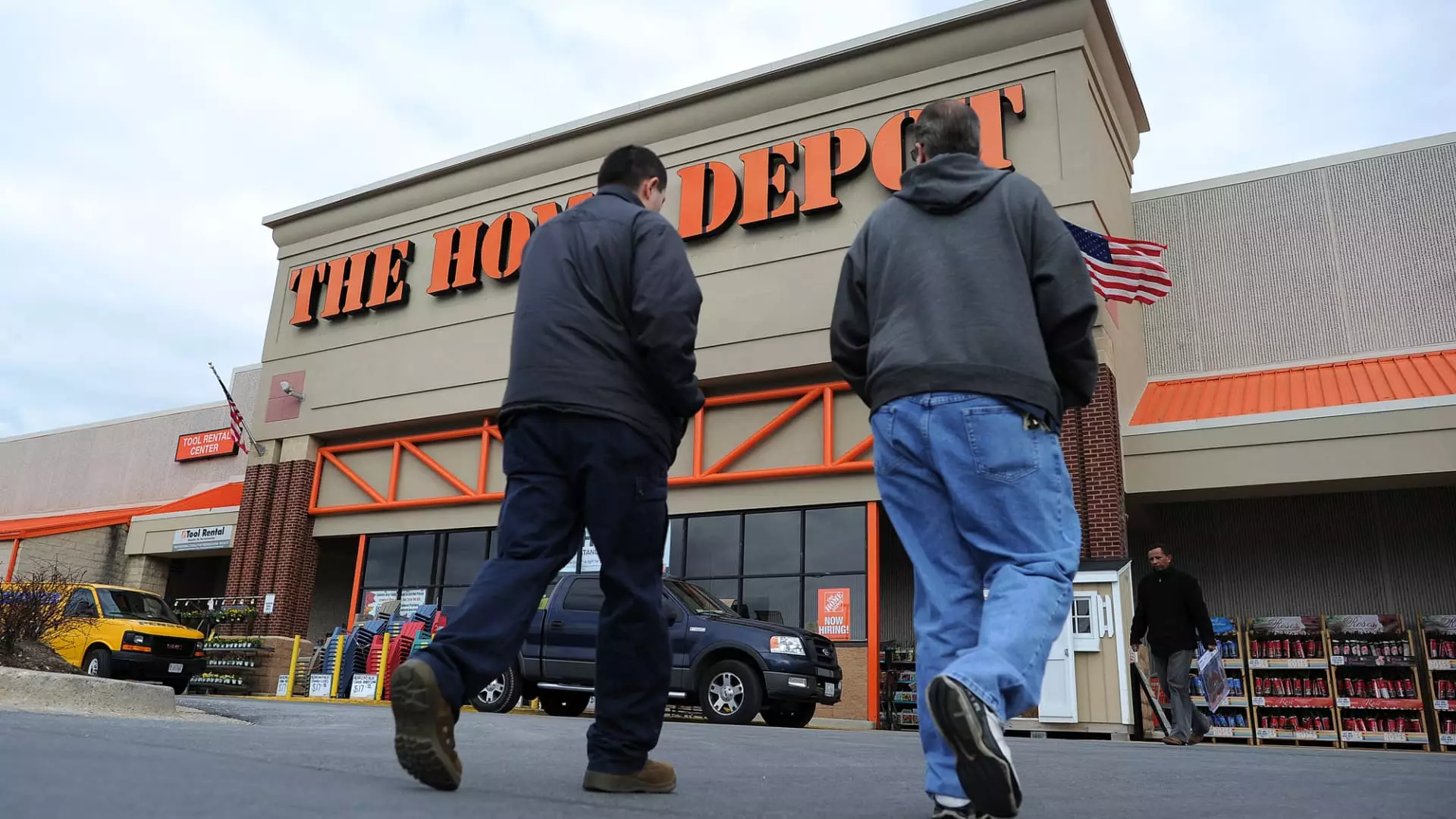Home Depot recently released its quarterly results, surpassing expectations. However, the company anticipates weaker sales in the second half of the year due to factors such as high interest rates and consumer uncertainty affecting demand. This article will delve into the details of Home Depot’s performance, the challenges it faces, and the broader economic context impacting the retail sector.
Home Depot’s earnings per share of $4.60 exceeded analyst estimates of $4.49 per share. Similarly, the company’s revenue of $43.18 billion was higher than the expected $43.06 billion. Despite these positive outcomes, the retailer foresees a decline in full-year comparable sales by 3% to 4%, a significant shift from its earlier projection of just a 1% decline. This adjustment reflects the impact of consumer behavior influenced by interest rates and economic uncertainty.
Chief Financial Officer Richard McPhail highlighted a prevailing “deferral mindset” among consumers, driven by interest rate fluctuations leading to postponement of major purchases like home renovations. However, recent surveys reveal a deeper sense of unease among customers, prompting delays in spending due to broader economic uncertainties. Home Depot’s experience mirrors broader trends in the retail sector, where consumer confidence plays a crucial role in driving sales.
The Federal Reserve’s contemplation of rate cuts has further complicated consumer decision-making. Anticipation of lower interest rates in the near future has led many potential buyers to hold off on home improvement projects, expecting better financing options down the line. This cautious approach has weighed on Home Depot’s sales, contributing to a decline in comparable sales across its business segments.
Despite near-term challenges, Home Depot remains optimistic about the future of the home improvement market. The company cites factors such as aging housing stock, housing shortages, and property value appreciation as long-term growth drivers. Additionally, a significant portion of Home Depot’s customer base comprises financially stable individuals, providing a foundation for resilience amid economic uncertainties.
As Home Depot navigates a challenging retail landscape, the company’s performance serves as a barometer for broader economic conditions. Rising inflation, coupled with consumer apprehensions, underscores the delicate balance between spending and saving. The upcoming earnings reports from retail giants like Walmart, Target, Macy’s, and Best Buy will offer further insights into consumer sentiment and the health of the retail sector.
Home Depot’s quarterly results reflect a complex interplay of economic factors, consumer behavior, and industry dynamics. While the company has outperformed expectations in certain areas, the challenges posed by high interest rates and economic uncertainties loom large. Moving forward, Home Depot’s ability to adapt to changing market conditions and consumer preferences will determine its resilience in the face of ongoing challenges.

